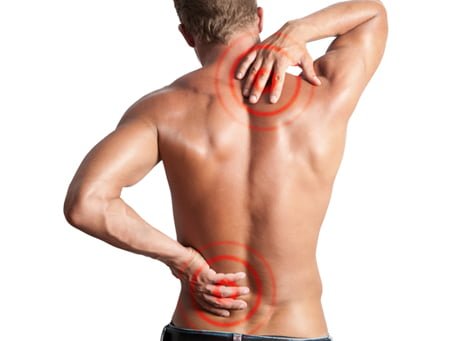 Low back pain is one of the most common presentations to the physiotherapists at First Choice Health. It is estimated that over 80 per cent of the Australian population will experience low back pain at some point in their lives. Alarmingly, research shows that the likelihood of experiencing back pain/ relapses of back pain increases with each individual episode. The good news is that most occurrences of back pain are self limiting, that is, they will get better with time (and preferably, treatment).
Low back pain is one of the most common presentations to the physiotherapists at First Choice Health. It is estimated that over 80 per cent of the Australian population will experience low back pain at some point in their lives. Alarmingly, research shows that the likelihood of experiencing back pain/ relapses of back pain increases with each individual episode. The good news is that most occurrences of back pain are self limiting, that is, they will get better with time (and preferably, treatment).The spine comprises 4 regions, the cervical (neck), thoracic (mid back), lumbar (low back) and sacral (base of the spine). The bones of the spine are called vertebrae. The spinal cord passes through an opening through the back of the vertebrae, with its offshoots (nerves) passing between each joint/ level of bone. The vertebrae are separated by discs which are cartilaginous structures that allow flexibility for the spine and act as shock absorbers. The vertebrae and discs are held together and supported by our back muscles and ligaments.
Back injuries can be classified as either acute or chronic and can affect any of the structures described above often as a result of trauma (e.g. incorrect lifting techniques/ motor vehicle accident), sports injury, poor postures or degenerative changes.
Sources of back pain:
Disc bulge:
The disc between the vertebrae may be damaged and bulge slightly, placing pressure on the nerves in the area. This can result in local back pain, leg pain/ Sciatica, numbness in the leg and leg weakness. This pain can be felt centrally or on one side of the back, or on one or both of your legs (either the front, side or back) If you experience these symptoms, it is recommended you seek both Physiotherapy treatment and, potentially medical advice or medical imaging (e.g. MRI). Your physiotherapy treatment will vary greatly depending on the nature and severity of your disc bulge.
Muscle spasm:
With any instance of back pain, our muscles will enter a state of protective muscular spasm to prevent further injury or damage. The muscle spasm itself is a painful reminder that your back is injured and will limit your ability to perform every day activities. Muscle spasm is treatable with physiotherapy, which will usually include advice regarding the use of heat packs and soft tissue work on the affected areas.
Joint sprains:
Joint sprains can result in one sided back pain which may or may not radiate into the buttock or leg. Your movement will often be restricted. Physiotherapy treatment will be aimed at restoring the normal movement of the joint(s) affected and in doing so, relieving your pain. As above, advice regarding using heat, soft tissue work and mobilisations might be suggested by your First Choice Health physiotherapist.
Postural back pain:
Back pain as a result of poor postures is one of the most common causes of low back pain. Desk set up, sleeping position, prolonged positions (e.g. gardening or studying) may all be contributing factors. Postural back pain is more common in the younger patient and is often caused by weakness in the core abdominal and back muscles.
Degenerative back pain:
In the older population, back pain may arise from arthritic changes or ‘wear and tear’. This is often characterised by stiffness in the morning which may improve or worsen during the course of the day and may be gradual in onset. Your First Choice physiotherapist can provide you with some stretching exercises, massage and mobilisations to help get you moving.
Physiotherapy management of back pain
Before treatment can begin, your First Choice Health physiotherapist will thoroughly assess your back and accurately diagnose your problem. At this time, a physiotherapy management plan can be devised which may include massage, mobilisations, stretching, strength exercises, dry needling.
Contact us today to make an appointment with our physiotherapists to discuss your back pain.